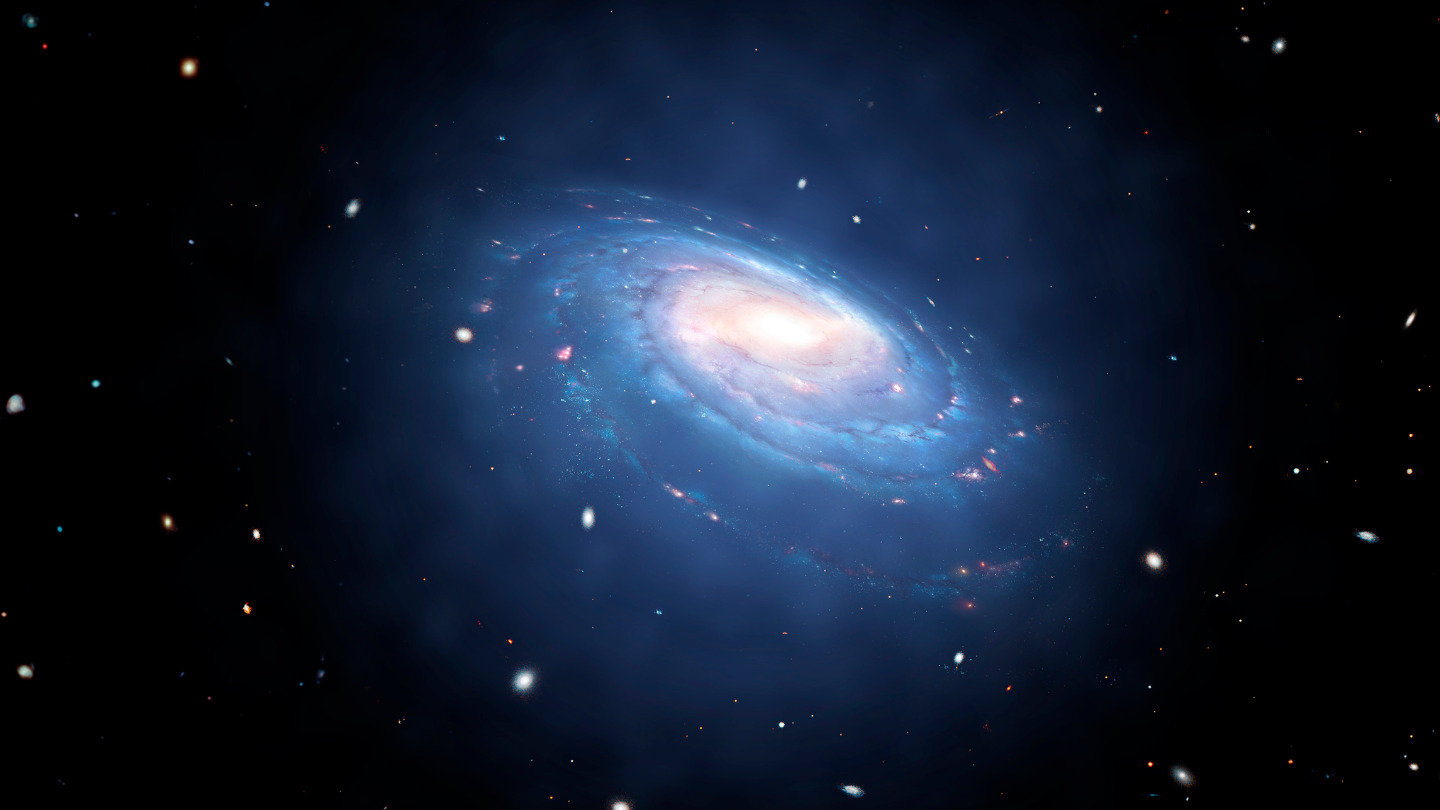The discovery of phosphorus in a cloud at the edge of the Milky Way has extended the region in our galaxy where life might be found.
Phosphorus is one of six essential elements for life on Earth, along with nitrogen, carbon, hydrogen, oxygen and sulfur (SN: 12/16/22). Until now, it had been the only one of those elements missing from the farthest reaches of our galaxy. Finding phosphorus that far out could extend the galaxy’s habitable zone out from its center by roughly 22,000 light-years, researchers reported June 8 at a meeting of the American Astronomical Society in Albuquerque. That in turn could motivate astronomers to look in the hinterlands of the Milky Way for planets and any life they might harbor.
The team pointed two radio telescopes at a cool, dusty gas cloud at the edge of the galaxy. The cloud is a frigid –248° Celsius — a mere 25 degrees above absolute zero. It sits about 74,000 light-years from the galactic center, nearly triple the distance Earth is from the Milky Way’s core. And it has signatures of phosphorus monoxide and phosphorus mononitride, astrochemist Lilia Koelemay said at the meeting.
Looking for phosphorus in that distant cloud was a long shot, says astrochemist Lucy Ziurys, Koelemay’s collaborator at the University of Arizona in Tucson. The element is produced only in supernovas. But there’s not a lot of material in the outer Milky Way, so it’s hard to build stars big enough to end their lives in massive, element-spewing explosions (SN: 11/2/21). Beyond 49,000 light-years from the galaxy’s center, there is only one supernova remnant known, Ziurys says.
One way phosphorus could have ended up in the outer galaxy is through a supernova closer to the center that launched a “galactic fountain,” Ziurys says. “A supernova explodes, the material gets thrown out of the galactic plane, then settles back down near the galactic edge.” The material would be very diluted there, but “if there are different supernovae going off, they’re going to keep polluting the outer galaxy,” she says.
“The detection of the phosphorus-bearing molecules … seems clear and compelling,” says Francesco Fontani, an astrophysicist at the Italian Institute for Astrophysics in Florence, who was not involved in the study. He has observed some of the other essential elements for life in the outer galaxy, but never phosphorus.
Because astronomers had not found the six life-essential elements so far from the galactic center, they assumed the region where life could exist in the Milky Way — what’s called the galactic habitable zone — extended at most to the farthest supernova they’d found, about 52,000 light years from the galactic center. There’s an assumed inner edge as well at about 6,500 light-years from the galaxy’s core. The relatively large numbers of supernovas occurring there would expose any planets in the region to intense ultraviolet and X-ray radiation, making it difficult for life to last for long.
“This detection, together with previous detections of organic molecules at similar large distances from the galactic center, supports the idea that the outer boundaries of the galactic habitable zone could be wider than what we previously thought,” Fontani says.
For life to emerge so far from the galaxy’s center, planets would need to exist out there. So far, they have been observed only relatively close to the solar system — most within a few thousand light-years. “I don’t think we know right now whether they can form at larger galactic-central distances,” Ziurys says. Finding the six elements for life at the galaxy’s edge, she says, will hopefully spur on the search for the most distant places where it could thrive.
Denial of responsibility! My Droll is an automatic aggregator of Global media. In each content, the hyperlink to the primary source is specified. All trademarks belong to their rightful owners, and all materials to their authors. For any complaint, please reach us at – [email protected]. We will take necessary action within 24 hours.


